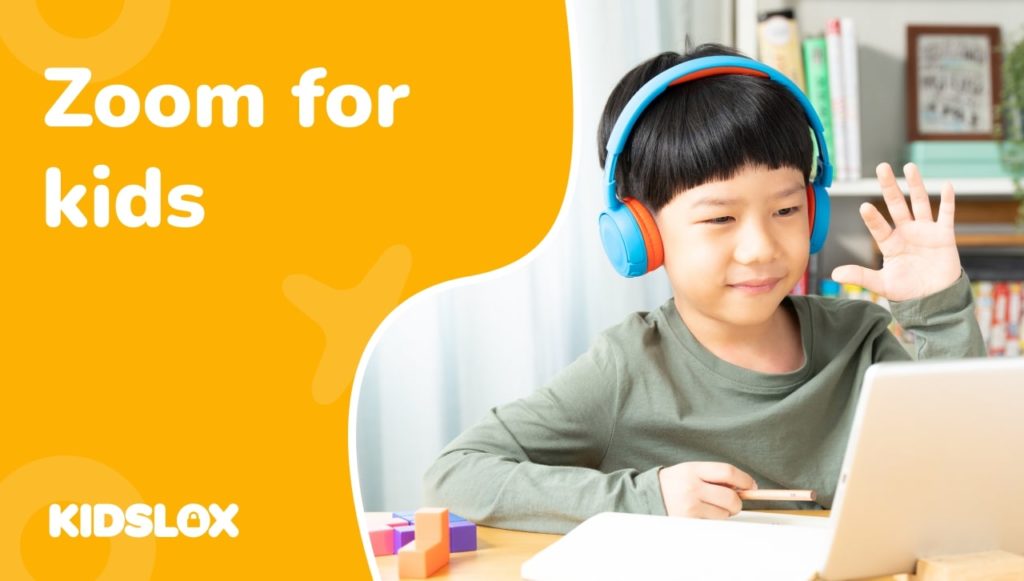Navigating parenthood in the digital age presents a unique set of challenges and questions. One of the most pressing questions is, “Should we allow our kids to keep their phones in the bedroom overnight?”
This digital dilemma confronts many parents, torn between the convenience technology offers and potential negative repercussions. We all want our kids to stay ahead of the curve in the digital world but to do that, we must set parameters and boundaries early.
And when it comes to the issue of Phones in bedroom, the struggle between convenience and safety continues. On one hand, allowing kids to keep their phones in bedroom overnight gives them easy access to potential resources for school projects or a way to connect with friends.
However, it also allows kids unrestricted access to social media and the internet, which can lead to sleep deprivation, cyberbullying, exposure to inappropriate content, and in some cases, digital addiction.
It’s essential to put safety first and consider each family’s unique needs when making decisions about tech in the bedroom. Let’s look at some practical tips and insights to help you navigate this ever-evolving digital landscape.
What Are The Health Risks of Having Phones in Bedroom?
The Radiofrequency Debate: Proximity and Potential Risks
Some parents express concern about the potential risks of radiofrequency (RF) emissions from devices like phones, tablets, and laptops. Devices powered by Wi-Fi, Bluetooth, and cellular radio networks emit RF signals the body can safely absorb.
While debate still rages on what constitutes a “safe” level of radiation exposure, studies continue to find there is little risk to the body or mind when using these devices in the bedroom.
The true risk of having a smartphone or tablet in the bedroom lies not in radiation but in how it’s used and its effects on sleep.
Sleep Disruption: The Lure of Late-Night Notifications
If the risk of radiofrequency radiation exposure isn’t the biggest concern, what is? Rather than worrying about what’s going from the phone to your child, perhaps the most significant risk is what’s going from your child to the phone.
Let’s face it: Phones in bedroom can become a major culprit of distractions and disrupt sleep.
For many secondary school students, bedtime is the time to catch up on social media or video games, leading to later and later bedtimes.
Teens may even be so attached to their devices that they take them into their beds with them – which means these screens are still lit up late at night while a person should be sleeping.
This can lead to sleep disruption, which can significantly impact academic performance. Students not getting enough restful sleep may be more prone to making mistakes in school, missing assignments, and even falling asleep in class.
Inappropriate Content: The Hidden Risk of Unrestricted Access
Unrestricted phone access in bedrooms opens up potential dangers for children to encounter inappropriate online content, whether accidentally or deliberately.
While a valuable educational resource, the internet also hosts content unsuitable for children, such as violent media, explicit material, or platforms for cyberbullying.
Nighttime browsing, often unsupervised, further increases the risk of exposure. Alone in their rooms, children may venture into unsafe digital territories or interact with unknown individuals.
Studies show early encounters with such content can have profound psychological effects, from inducing anxiety and distress to causing precocious sexualization and distorted reality perceptions. What may begin as innocent curiosity could lead to damaging consequences, underscoring the need for guided internet use and appropriate boundaries.
The Impact of Blue Light on Sleep
One of the primary issues that phones in bedroom can lead to is sleep disruption. Screen time, in general, can be a distraction, but many devices also emit blue light, which has been linked to making it harder for our brains to wind down and relax.
Blue light is a type of light with short wavelengths and high energy. While it’s naturally emitted by the sun, it’s also produced by digital screens, such as those on smartphones. Exposure to this type of light, particularly during the evening hours, can significantly affect our sleep and overall health.
Blue Light and the Circadian Rhythm
Our bodies operate on a natural 24-hour cycle known as the circadian rhythm. This rhythm regulates many physiological processes, including the sleep-wake cycle. Blue light exposure, particularly late evening, can disrupt this natural rhythm.
When exposed to blue light, the brain inhibits the production of melatonin, a hormone that helps regulate sleep. This can delay the onset of sleep, alter the stages of sleep one experiences, and lead to less restorative rest.
With the understanding of how blue light affects sleep, it’s clear that having devices in bed is a recipe for restless nights. While scrolling through social media or playing a game might seem like a harmless pre-bedtime activity, it can significantly disrupt the sleep-wake cycle.
The convenience of having a phone at arm’s length, even if it’s just used as an alarm clock, can inadvertently encourage late-night screen use. This could increase exposure to blue light, thus disrupting the sleep cycle.
Beyond Sleep: The Far-Reaching Effects of Blue Light Exposure
While the impact of blue light on sleep is significant, additional health risks are associated with prolonged exposure. Here are some potential consequences:
Digital Eye Strain and Vision Problems
Prolonged exposure to screens and the blue light they emit can lead to digital eye strain. Symptoms can include dry eyes, blurred vision, and headaches.
This is often due to the high energy and short wavelengths of blue light, which can be more difficult for the eyes to filter, leading to fatigue. Over time, excessive blue light exposure can lead to more serious conditions like macular degeneration.
Mood Disorders
There’s a strong connection between sleep and mood. Disrupted sleep due to excessive blue light exposure can lead to mood disorders such as depression and anxiety.
A study published in the journal “Translational Psychiatry” demonstrated a link between the circadian rhythm disruption caused by blue light exposure and mood disorders.
Obesity & Cardiovascular Issues
Sleep deprivation and disruption of the circadian rhythm can interfere with appetite regulation. This is because it can alter the hormone balance regulating feelings of hunger and fullness, potentially leading to weight gain and obesity.
Some studies suggest long-term disruption of the sleep-wake cycle and the associated lack of sleep can lead to a variety of health conditions, including high blood pressure, heart disease, and diabetes.
In light of these potential risks, it’s clear that the consequences of blue light exposure, especially from using a phone at night, extend far beyond sleep issues.
Helping Kids Develop Healthy Technology Habits
So, the risks of having devices – especially phones – in the bedroom at night are startling. But what can families do to ensure they are mindful of the potential dangers? Here are a few ideas:
Establishing a ‘Digital Curfew’
Setting a designated time each night when all devices need to be turned off can be a beneficial strategy. This ‘digital curfew’ can help ensure your child has enough time to wind down without screen stimulation before sleep.
The specific timing can be adjusted based on age, schedule, and family routines, but generally, a good rule of thumb is to turn off devices at least an hour before bedtime.
“Putting the Phone to Bed”
Much like we have a bedtime, so can our devices. Designate a spot outside of the bedroom where the phone can ‘sleep’ for the night.
This can be a charging station in a communal space, such as the living room. This helps reduce the temptation to use the phone late at night or check it first thing upon waking. It may seem odd at first, but when you begin establishing the habit, you will be pleasantly surprised by how much of a difference this “bedtime routine” makes.
It can help improve your child’s sleep quality and quantity and provide an opportunity for creative screen-free activities or even extra snuggle time in the evening!
Promoting Screen-Free Activities Before Sleep
Encourage your child to engage in relaxing, screen-free activities before bed. This could include reading a physical book, drawing, writing in a journal, or any other creative outlet a child can enjoy without needing a screen.
These calming pre-sleep rituals can help signal to the body it’s time to wind down and prepare for sleep. And you’ll be surprised at how much your child enjoys these activities that don’t involve a device!
In addition, you can also use this time to discuss the day with your child or chat about the upcoming day. This is an excellent opportunity for quality bonding and conversation between you and your little one.
Modeling Healthy Digital Behavior
As parents, our behavior serves as a powerful model for our kids. It’s essential for us also to follow healthy digital habits, such as adhering to the digital curfew, keeping our phones out of the bedroom, and engaging in screen-free activities.
By doing so, we can lead by example and reinforce the importance of balanced tech use. Parents and guardians are a child’s first teachers, and this is an opportunity to create a strong foundation for digital well-being.
Making Technology-Free Zones
You could opt to make the bedroom a tech-free zone or plan a regular family walk disconnected entirely from digital media. Scheduling time to be “unplugged” can help everyone to stay focused and maintain balance in their daily lives.
In addition, you could establish ground rules for device use within the household, including limits on total usage times and types of activities allowed. A great way to set this up is with a parental control app that allows parents to monitor and manage their child’s device usage. Parents can promote healthy habits around digital media use in the home by setting up rules and guidelines.
Making Informed Decisions About Phones in the Bedroom
Navigating the digital world as a parent is no easy task, and the question of whether to allow phones in the bedroom overnight is just one of many we must grapple with.
Through understanding the potential risks associated with nighttime phone use, from disrupted sleep to potential health issues, we can see the clear benefits of setting boundaries and promoting healthy technology habits in our children.
But it’s not just about understanding the risks—it’s also about taking practical, effective steps to mitigate them. From establishing a digital curfew to creating technology-free zones in the home, we can employ various strategies to foster a more balanced relationship with technology in our children.
If you need additional support in managing your family’s digital habits, consider checking out Kidslox!
A leading parental control app – compatible with both Apple and Android devices – allows you to set timers, monitor usage, and restrict access for all connected devices in your home. It’s a handy tool for fostering healthy tech habits and making informed decisions about screen time.
A single Kidslox account can control all connected devices in your home – ensuring your family develops safe and effective digital habits. Learn more about Kidslox online – and take the next step to create a healthier relationship with technology in your family.





